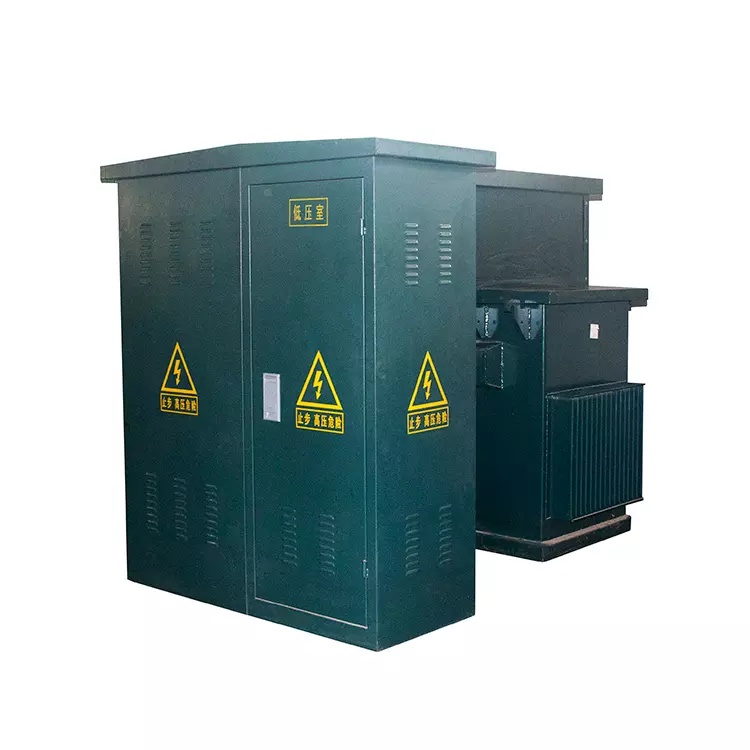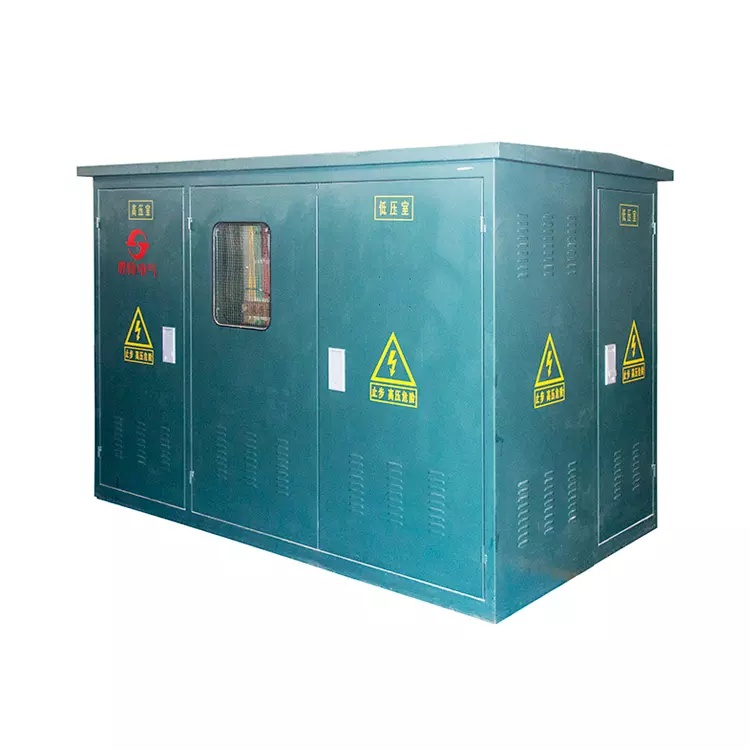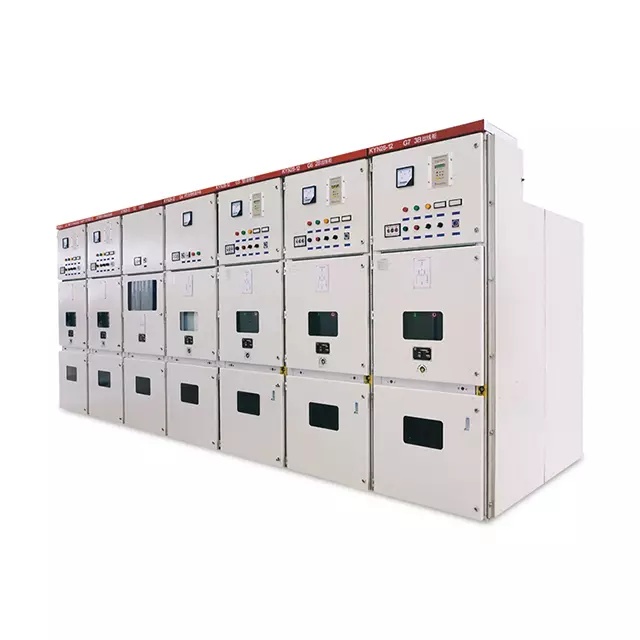- All
- Product Name
- Product Keyword
- Product Model
- Product Summary
- Product Description
- Multi Field Search


Views: 0 Author: Site Editor Publish Time: 2025-10-30 Origin: Site
Pad mounted distribution transformers are vital parts of electrical power networks. They provide stable voltage changes for homes, businesses, and industries. These enclosed units ensure safety, efficiency, and easy access in outdoor settings. Proper care keeps them working well, extends their life, and avoids expensive breakdowns that could cut power to users.


Understanding the main parts of pad mounted transformers helps workers spot problems and carry out correct upkeep tasks.
Pad mounted transformers, also called American Box Transformers or combined transformers, are key power units in cable networks. The transformer tank holds the magnetic core and windings. A sturdy enclosure protects these parts from weather. The unit includes high-voltage load switches and fuses inside the box. A foundation pad ensures stable mounting and good grounding. The cabinet has secure panels for easy maintenance access.
The fully sealed oil tank provides strong insulation and good heat release for the transformer oil. Cooling happens through natural air flow via radiator fins or tank walls. This removes heat produced during work. Insulation, using transformer oil or solid materials, keeps voltage levels separate and prevents risky electrical sparks.
These transformers are small, light, and easy to install and maintain. They offer safety, reliability, and a pleasing look. Protective devices include overcurrent protection, surge arresters, and fault sensors. These isolate the transformer during issues. The enclosure is tamper-proof and allows proper air flow for cooling.
Regular care is key to reliable transformer operation. It helps find issues early and avoids major failures. Good upkeep reduces energy waste and extends equipment life.
Check the transformer monthly for rust, especially around joints, bolts, and grounding points. Oil leaks show as dark stains on the pad or tank. They need quick fixing to avoid environmental harm and insulation loss. Look for physical damage from vehicles, vandalism, or storms. This can affect safety and parts. Inspect bushings, surge arresters, and connections for cracks, color changes, or wear that may show electrical stress or overheating.
Yearly electrical tests check transformer health. Insulation resistance tests use a megohmmeter to confirm winding insulation quality. They spot moisture or dirt issues. Turns ratio tests verify correct voltage changes and detect winding damage. Load tap changer tests ensure proper contact and switching for voltage control.
Oil tests give a full picture of transformer condition. Regular oil checks and filtering boost efficiency and prevent breakdowns. Dielectric strength tests check if oil can handle electrical stress. Moisture tests find water that weakens insulation. Dissolved gas tests detect gases from arcing, overheating, or material breakdown. These warn of early faults.
Clean the outside to remove dirt, leaves, and plants that block heat release or cause fire risks. Avoid high-pressure washing near electrical parts. Use safe cleaners for oil stains and dirt. Clear radiator fins of leaves, webs, or debris to ensure good air flow and cooling.


Proactive care prevents problems instead of just fixing them. These steps improve reliability and cut costs.
Good load management prevents failures and keeps efficiency high. Track load current to avoid overheating and insulation wear. Balance loads across phases to reduce hot spots and winding damage. Use load monitors for real-time data. They help make smart loading choices and spot issues early.
Keep the area around the transformer clear of plants. This ensures good air flow and lowers fire risk in dry conditions. Ensure proper drainage to avoid water buildup, which causes rust and electrical faults. Regularly clear debris, bird nests, and other materials to maintain safe conditions.
Keep detailed records of upkeep, tests, and performance. Follow manufacturer care schedules, adjusted for local conditions. Logs help spot repeated issues and improve maintenance plans based on real equipment needs, not just set times.
Knowing common issues helps workers spot early signs and fix them before major failures.
Spotting a struggling transformer is key to avoiding breakdowns and keeping efficiency. Signs include odd noises, oil leaks, overheating, poor performance, or bad test results. Overheating comes from heavy loads, poor cooling, or internal faults. Use infrared scans to find hot spots early. Clean cooling surfaces, ensure good air flow, and check for blocked passages to fix cooling issues.
Moisture harms insulation and speeds up part wear. Check gaskets, seals, and joints for water entry points. Maintain or replace silica gel breathers to keep moisture out of the tank.
Electrical tests find faults before they cause big problems. Test protective relays for proper function during faults. Ground fault tests spot insulation issues that could be dangerous. Regularly test surge arresters to ensure protection from lightning or power surges.
SHENGTE offers reliable equipment for modern power systems. The company is a top name in the power distribution field due to its innovation and quality focus.
SHENGTE is a leading distribution transformer manufacturer. It has skilled R&D and design teams with over 10 years of experience and national certifications. The company uses advanced manufacturing and strict quality checks to provide dependable power solutions.
As expert transformer makers, SHENGTE supplies dry-type and oil-immersed transformers, integrated low-voltage switchgear, and high-voltage switchgear. These ensure safe, efficient operation for various uses. Their pad mounted transformers are built for outdoor use and long-term reliability in tough conditions.
SHENGTE ensures top quality by testing every distribution transformer, low-voltage switchgear, and high-voltage switchgear before shipping. Their skilled installation team guides customers through delivery, setup, and after-sale support. Regular care of pad mounted transformers ensures reliable power, cuts costs, protects investments, ensures safety, extends equipment life, boosts efficiency, and reduces unexpected failures.


Regular care of pad mounted distribution transformers is vital for top efficiency, reliability, and long life. Routine checks, electrical tests, oil analysis, and proactive steps like load management and environmental care reduce energy waste, prevent breakdowns, and extend equipment life. Fixing issues like overheating and moisture keeps operations safe and cuts costs. Working with trusted makers like SHENGTE ensures high-quality equipment and support, delivering steady power and long-term savings.
Q1: How often should pad mounted transformers be checked and maintained?
A: Visual checks should happen monthly for leaks, rust, or damage. Electrical tests, like insulation and turns ratio, should occur yearly. Oil tests are needed every 2-3 years or if issues appear. Harsh conditions or heavy loads may require more frequent care.
Q2: What signs show a pad mounted transformer needs urgent care?
A: Warning signs include strange noises, oil leaks, overheating, poor performance, or odd test results. Look for damaged bushings, surge arresters, discolored oil, burnt smells, or tripped devices. These need immediate expert checks to avoid failures or dangers.
Q3: Can regular care improve transformer efficiency and cut energy costs?
A: Yes, good care boosts efficiency and lowers costs. Key steps include managing loads, testing and filtering oil, using high-efficiency cores, and adding smart monitors. These reduce energy waste and extend transformer life, saving money on power bills.